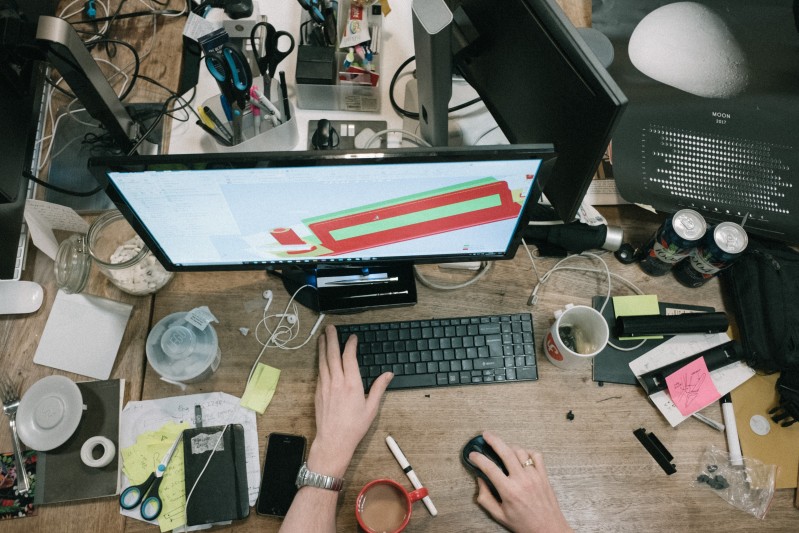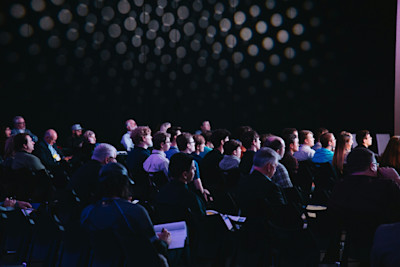
Most people wouldn't consider prioritization an enjoyable process.
When you prioritize, you have to say no a lot, and you usually end up saying no to new ideas, features, or initiatives more often than you say yes.
If you find yourself in a difficult position to know how to prioritize when everything is a priority, it can get even more difficult.

The future ahead and the success of our projects are very uncertain, so finding a way to make decisions more data-based is the right way to go.
Over the years, companies and people have developed various frameworks and models for prioritization. Today I want to tell you a bit about one of our favorites, the Buy-a-Feature Method.
What Is the Buy-a-Feature Method?
Buy-a-Feature is a simple prioritization framework that comes in a game played with customers and stakeholders. It is used to identify the value of possible new features of your product.
During the game session, participants are handed a fixed amount of play money or jelly beans to collaboratively spend on priced product ideas.

By letting them choose the importance of features and observing their decision-making process, you can gain insight into what customers and important stakeholders prefer and why.
This information helps you when choosing which features should be implemented next.
How do you use the Buy-a-Feature framework?
The game is best played in person, but it could also be done online using, for example, a spreadsheet that all participants can edit.
The advantages of playing in person are that the participants’ feedback is potentially more detailed. You can capture their direct reactions, and that
you learn from observation during the discussion.

Preparing and playing buy-a-feature is carried out in four major steps.
1. List the features and assign prices
Possible elements of the list could be new features, fixes of existing ones, product enhancements, new products, or any other idea which demands prioritization.
These items could, amongst other things, come from customer requests or user and market research.
Be careful only to choose user-focused features and not to get too technical to avoid confusion.
There should also not be too many items so that the participants can get a good overview and are not overwhelmed.

Between 20 and 30 features might be a good start.
The made-up prizes should reflect the realistic development cost of the feature.
Don’t use a real unit like euros or dollars to avoid making connections to the real prize. It is also a good idea to make the prizes relative to each other. If one feature takes twice the effort, it should cost twice as much. The cost could include factors like money spend, complexity, effort, or risk.
At least one item should be priced higher than the individual budget to encourage and observe communication between the players.
Print the title, the description, and the price of each feature on a card and give these to the group.
Using just a printed list or visible on a large screen is also possible. Still, but by using feature cards, you encourage a more interactive discussion as the cards get handed around by the participants.
2. Hand out the play money
Each of the customers or stakeholders who participate in the Buy-a-Feature game receives a fixed amount of play money. You have to be careful when deciding the budgets.
If you hand out too much, the participants won’t have to think too hard about which features they would truly prefer.
But if the budget is too small, you might lose valuable information as the players cannot prioritize all desirable features.
A good balance enables each participant to buy between a third and a half of the features. Use play money from a game like Monopoly or print out your own design.
3. Observe and learn from the discussion
Start the buying process by explaining all of the available features. Then, observe while the customers or stakeholders discuss the features and make their decisions.

Stay present in the room to be there for questions and, if necessary, guide the discussion if the participants get stuck on a decision or can’t find consent.
The group size should not be too large so that the players don’t have to make too many compromises.
An ideal size would be 3 to 5 people to encourage valuable discussions within the group. By paying close attention, you can uncover valuable learnings about your customers’ priorities and needs.
This phase ends if all the play money is spent or if the participants bought all the features they want. It should be made clear beforehand that it is okay to have some leftover budget.
This is important to ensure that no buys are made just to spent the rest of the money.
4. Review the purchases
Let the customers explain their decisions individually and discuss this as a group to get more insight than from the previous observation step.
It might have happened that some participants changed their minds about which features to spend their budget on during the game.
The goal is to really understand the thought process that led to these choices.
Advantages of using Buy-a-Feature
Contrary to other prioritization methods, Buy-a-Feature engages customers and stakeholders in the decision-making process. It helps you to get an understanding of what features they really value.
One takeaway could also be information about whether a higher number of smaller updates are wanted or less but larger ones with more impact.
Buy-a-Feature provides useful feedback and prevents you from developing features that would, in fact, not be widely used.
Apart from these benefits, it is also a fun way to interact with your customers!
Is Buy-a-Feature right for your team?
If it seems hard to decide which features are most valuable to customers or if you are struggling with a complex feature request list but only have limited resources, playing Buy-a-Feature is a great choice.
It is also useful if other market research strategies failed or showed that too many enhancement possibilities exist, which are difficult to prioritize.
Another use case presents when you are testing initial product features before starting a new product to get a feeling for the reaction of potential customers.

Andrei Tiburca

Read also



Prioritize with confidence

Experience the new way of doing product management




